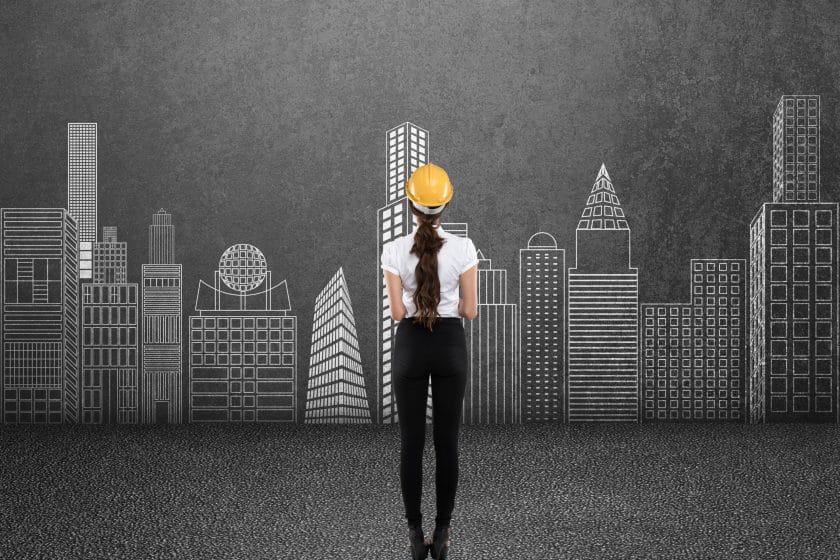Covid-19 has changed the way the world operates and our measures to perceive it. Everything that we took for granted and looked upon as normal will never be the same; especially the places we live and the way we work. It’s no doubt that the virus has come with a new set of learnings.
Apart from raising environmental awareness, the pandemic has raised numerous questions about the form of our cities, the spatial planning of our homes, and the layout of our neighbourhoods. As the world still grapples with this disease, it is more important than ever, that the architecture and design of our buildings undergo a complete evolution, to be able to adapt to this drastic change in our lives.
The design has a significant social role – the role of interpreting societal needs and translating them in an empathetic and innovative approach. This unprecedented situation has forced architects, interior designers, and developers to go back to their drawing boards and start all over again.
Design interventions will play a huge role in satisfying the demands of safe and hygienic workplaces and homes from now on. People want to feel safe and secure, as the fear of infection is still looming large. Several innovative measures are needed in the way our office spaces and homes will be designed and operated from, in the near future.
Changes in the residential designs
The pandemic has made people realise the significance of a safe and self-sufficient home. During the nationwide lockdown, our homes were turned into workplaces, classrooms for our kids, a place for us to exercise and relax etc. People felt quite overwhelmed, trying to manage everything from their homes. Therefore, a home is no longer just a place to reside; it is much more than that; people require a home that satisfies the emergent requirements of the new normal, in both the personal hygiene and work fronts.
Adaptability is the key
In a testing time like this, adaptability is the key, with multi-functionality being the main feature for post-Covid designs. The previous role of a home was limited to a residential retreat with restricted functions such as dining, cooking, sleeping and entertainment. Now, a home will be augmented by a prerequisite to serving as a full-time workplace and learning environment, and in some cases, even as a gym or recreation space.
Basis the need of the hour, transformable or movable furniture and spatial partitions are among the features that architects and interior designers might look at introducing.
Home automation will play a pivotal role
Home automation will also play a pivotal role, where we can expect systems to control features such as the temperature and even the colour of light etc. For example, the living room area could be a co-working space for a family during the day, with bright white light. In the evening, the same can be transformed into a relaxation area, with a dramatically muted level of illumination to create a cosier environment for unwinding.
Looking beyond the aesthetics
In the post-Covid era, aesthetics of an apartment is no longer the only concern; developers and architects have to plan and design a house not only for living but also for the buyers’ long term physical and psychological well-being.
Here the key focus areas would be adequate air, water, light and comfort, thereby providing occupants with increased confidence in the interior environment.
Changes in commercial designs
For commercial office sectors, re-evaluating floor plans to de-densify the office space will be a good practice. However, this can permanently alter building forms. For instance, with more people working from home, the office could be transformed into a space for meeting rooms of varied sizes and well-spaced communal workstations.
With the integration of natural elements and processes, the built-in ambience will probably be another key feature of the post-pandemic offices. Besides, more outdoor space can be expected to be incorporated on each floor, by providing terraces and roof decks. Proponents of this approach maintain that design interventions like these are directly linked to decreased stress, enhanced creativity and productivity and accelerated retrieval from illness.
As we are at the forefront of the fight against the pandemic, it is important to keep in mind effective solutions for infection control, and facilities designed to minimise the infection. This is also to create a space which will fulfil the social distancing norms without any conflicts. Workstations will be further apart.
There will be renewed layouts with elements like higher screens, glass barriers etc. Use of anti-microbial components that can be easily cleaned and sanitised will become prominent.
There are so many surfaces in offices that most people tend to use – the buttons of elevators, door handles, coffee machines, water coolers, taps in washrooms etc. This increases the risk of cross-contamination.
Technology-dependent spaces
Future offices will be even more dependent on technology with the increased use of contactless tech like automated doors, motion sensors used in taps, coffee machines. There will also be lifts that can be operated through phones. Furthermore, considering the situation, future office spaces are likely to be designed with dedicated isolation rooms in case anyone develops symptoms. This room will need special ventilation and negative air pressure to reduce further exposure.
This article is contributed by Adrija Agarwal, Strategy Advisor, Salarpuria Sattva.
(The views expressed here are solely those of the author and do not necessarily represent or reflect the views of RoofandFloor)





